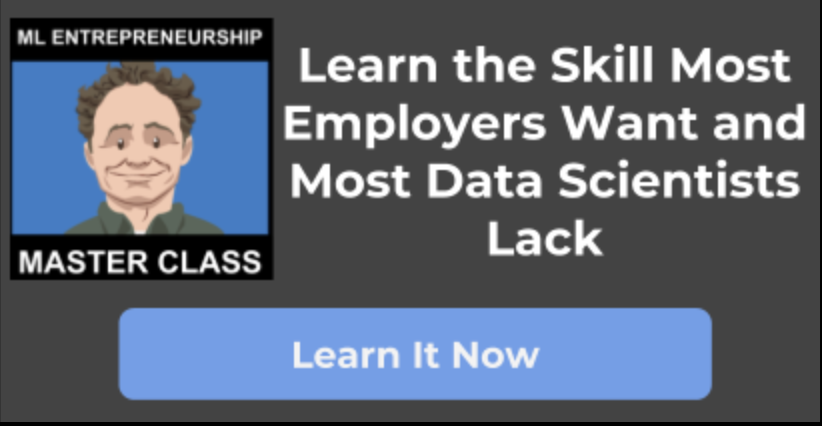
|

Source: Lucas Amunategui
This is something us content creators should always be thinking about, and if you don’t, you’re definitely leaving money on the table. Let’s start with what I did right before delving into my numerous missteps — I’m hoping to capitalize on that first impression…
I nailed this one from the beginning — yeah me!! I turned that feature on five years ago and it has been a consistent $100 a month. Unless you’re selling something, you’re making corporate videos, or you’re peddling clickbait and don’t want to confuse your mark, you should turn this feature on. When you enable this, YouTube will show ads related to your viewers’ demographics.
I do educational and experimental data science videos, I make sure the title is clear and the description descriptive. Ads or no ads, if somebody doesn’t want to watch, they won’t and if they do, they will watch it regardless. It’s an exchange, and may even be a useful one as some of these ads are spot on. If you make videos and don’t turn on the monetization button, you’re basically giving money away to Google.
And just for inspiration, imagine you’re Drake or one of those gaming commentators where their YouTube views hit 10mil+, yeah, you can multiply that consistent $100 a month by 1000 or more (see https://socialblade.com/ for estimates on how much they make).
To enable this feature, click the ‘Edit Video’ button and find the ‘Monetization’ switch.
Here’s a train I missed. I have between 5 to 10k sessions per month on my blogs and have failed to insert Adsense ads. I recently remedied that so can’t comment on how much money it brings (if someone is reading this does, please leave a comment).
I see no issues with the ads in my videos, but I do find auto-inserted Adsense ads in web pages a bit obtrusive. They either try to parade as your own content or they’re flashing annoyingly all over the place. So, if it brings in less than $10 a month, I will remove them and focus on advertising my own stuff — like my new book, my Udemy and Teachable classes.
One tip here is to not add them to your landing page, keep that area clear for your own brand and nobody else's.
To use this service you will need to have control over your HTML, go to https://www.google.com/adsense/start/
No, not talking about stuffing spammy ClickBank crap in your posts, I’m talking about leveraging the Amazon Associate program. Listen, if you are going to add a link to a product or book, it makes no difference to the reader whether it is an affiliate link or regular one — absolutely none! To them, the end product and price is exactly the same. I suspect most people don’t bother with this because they’re lazy (was my case anyway as I was an associate for over 4 years and only placed my first link a week ago — big shame on me).
So, whenever I mention my new book or somebody else’s, I make it an affiliate link. You’re not going to get rich off this unless you have ginormous traffic — say like Casey Neistat (see his affiliate links in the description: https://www.youtube.com/watch?v=yy9o2ImWtm0)
To become an Amazon Associate, signup here: https://affiliate-program.amazon.com
When one of my blog posts or videos is garnering a lot of attention (see How I Manage My YouTube Videos), I will create an in-depth eBook or class on that topic. I’ve created them on Udemy and Teachable. My classes have generated a couple hundred dollars every month. This number fluctuates a lot but as long as your class topics can stand the test of time, they will keep generating money over the years.
Udemy has worked well, but they do take about 50% of the profit, and what is worse is they have sales where they end up selling a $30 class for $6, and the author makes less than $3 of profit. This is tough territory because if those cheap buyers ask a lot of questions then you’re actually losing money. That is why I turned off these sales and started offering classes on Teachable where you end up with a much bigger cut of the profit.
Making an eBook is an absolute must! It gives you something to offer your readers who sign up for your newsletter. My eBooks are usually a collection of posts that have been popular in the past (and its good practice if you’re ever thinking about writing a full-featured book one day).
For most of us, creating great content is a point of pride and we’re understandably wary of anything that could tarnish these efforts. But I don’t think any of the points mentioned above are bad or salesy, on the contrary, if you’re in it for the long haul, you need to find gentle ways of monetizing your journey or you risk to run out of steam.
Note: for those interested in learning applied data science, check out my new free eBook and course: How to Create and Sell Your Machine Learning Product Online
Thanks for reading! And please share this article with a friend or colleague or two :-)
Best!
Manuel Amunategui,
Curator @ amunategui.github.io and ViralML